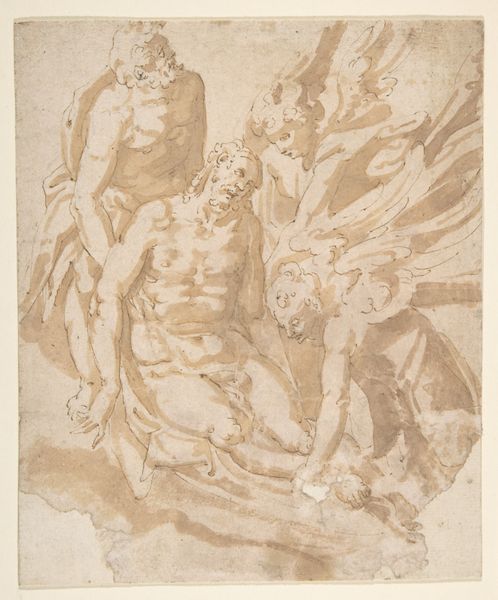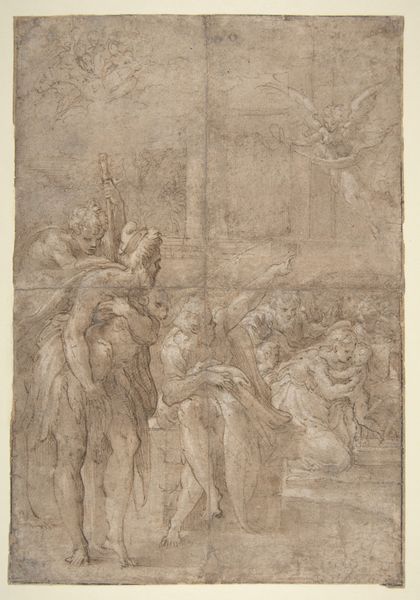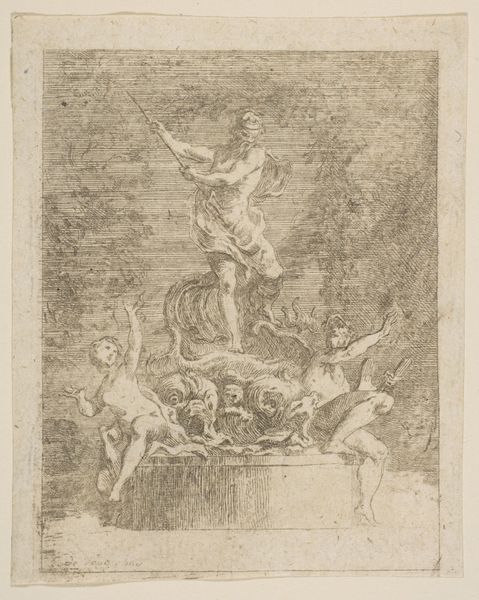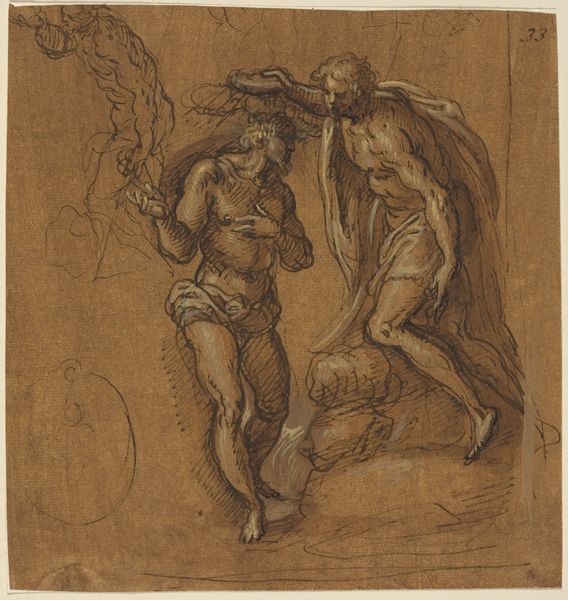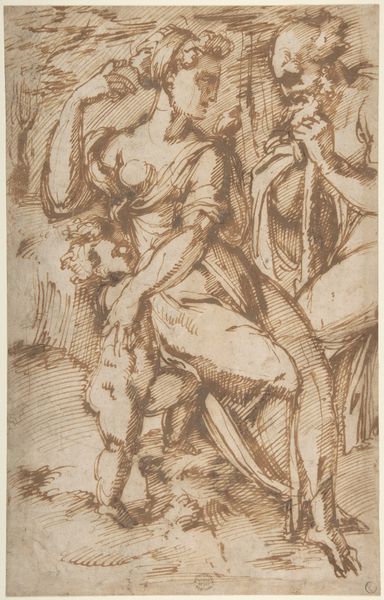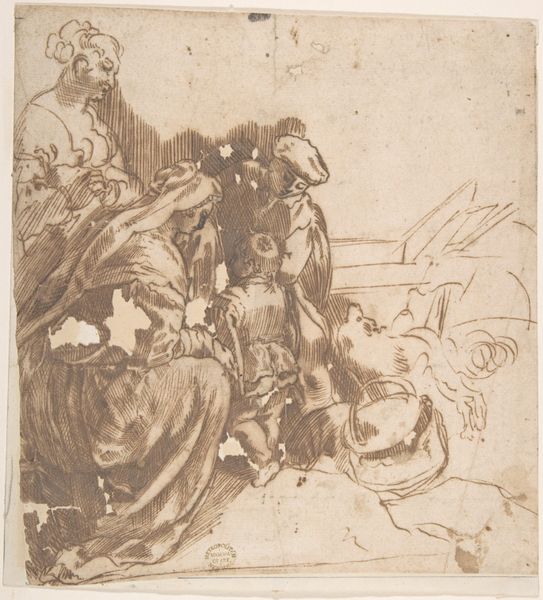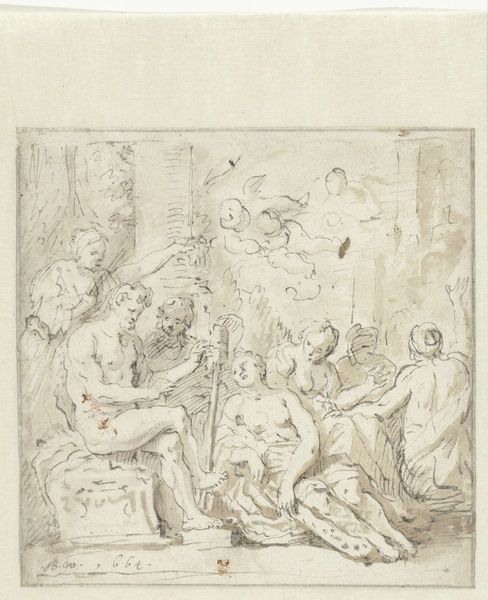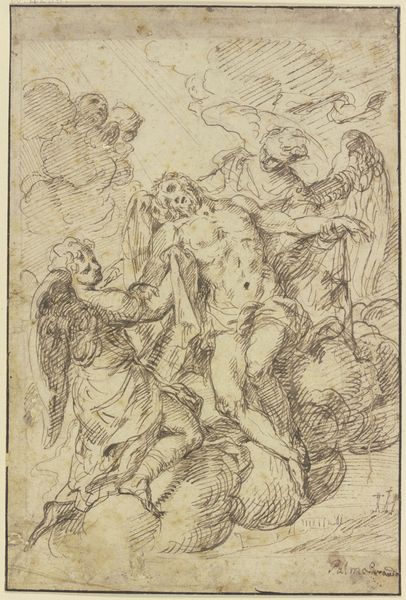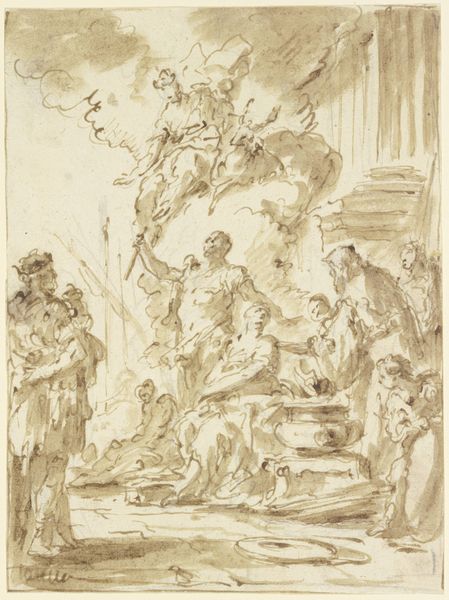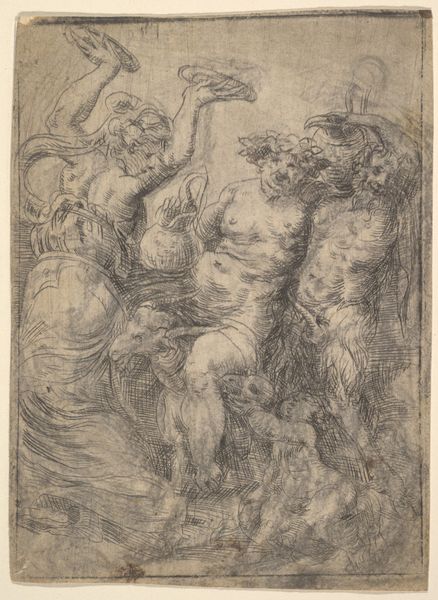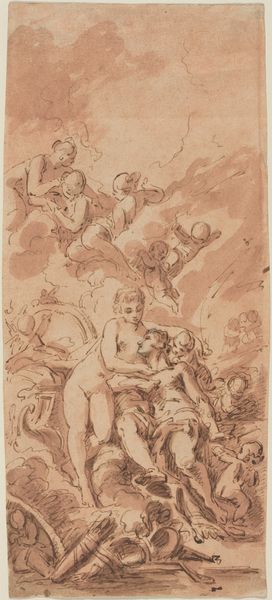
drawing, ink
#
drawing
#
narrative-art
#
ink painting
#
charcoal drawing
#
figuration
#
11_renaissance
#
ink
#
chiaroscuro
#
history-painting
#
italian-renaissance
Dimensions: 6-1/16 x 4-7/8 in. (15.4 x 12.4 cm)
Copyright: Public Domain
Curator: Giorgio Vasari's ink drawing, Judith Decapitating Holofernes, pulls us into a rather brutal, decisive moment. It's currently held at the Metropolitan Museum of Art. What strikes you first about this image? Editor: It’s raw, almost visceral. The high contrast created with ink—the deep shadows versus the stark highlights— intensifies the drama. It’s hard to look away from Judith's powerful stance as she exacts her gruesome act. Curator: Absolutely. The story of Judith is potent, and Vasari captures that. Think about it: Judith, a Jewish widow, seduces and then murders Holofernes, the Assyrian general, saving her city from destruction. The story embodies themes of courage, piety, and resistance against tyranny. Editor: That biblical context casts the drawing in a new light. I was initially drawn to the graphic violence, but understanding Judith as a symbol of resistance really changes the tone. How did this narrative function in the Renaissance? Curator: It served multiple purposes. For the Church, it could represent virtue triumphing over vice. But in the hands of artists and patrons seeking to express civic pride or defiance against oppressive rulers, Judith became a potent symbol of liberty. Vasari, working in Florence, certainly would have understood that resonance. Editor: I notice how Vasari emphasizes Judith's strength; she's not just a delicate woman, but appears formidable in her execution. The attendant, ready with the sack, heightens the disturbing domesticity of this act. Is that a common visual trope in representations of this story? Curator: Precisely. You often see the maidservant present. It underscores not only Judith’s bravery but also a sense of carefully planned subterfuge. Note too, how Vasari utilizes chiaroscuro, that strong contrast between light and dark, not just for dramatic effect, but also to sculpt the figures, lending them a sculptural quality. It's not merely illustrative; it is charged. Editor: The dynamism he captures makes this a compelling scene of historical reckoning. Understanding its symbolic weight invites conversations about politics, religion, and the evolving status of women and societal revolt, particularly through the tumultuous shifts of the Renaissance. Curator: Agreed, a chilling story rendered with incredible power by Vasari and how its significance has been viewed depending on social lenses and evolving expectations.
Comments
No comments
Be the first to comment and join the conversation on the ultimate creative platform.
